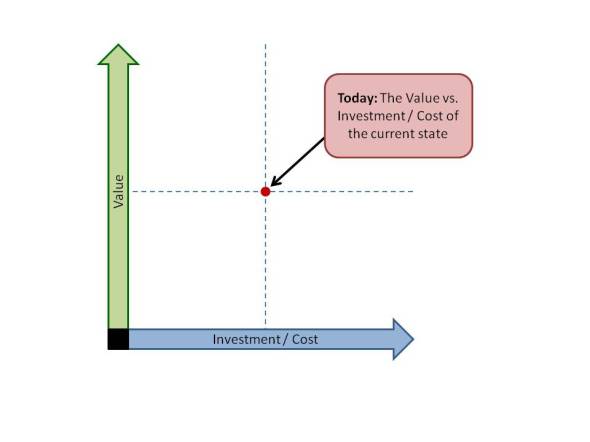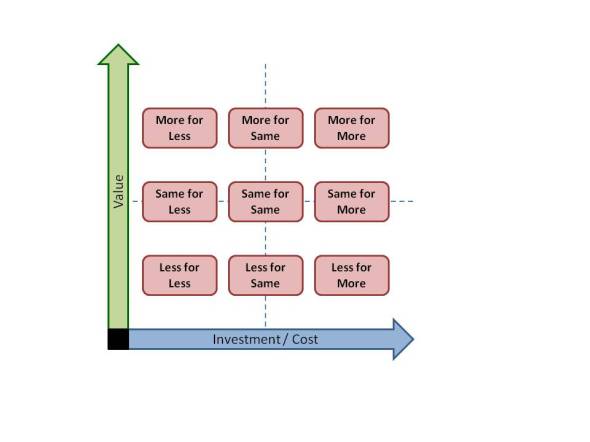My professional homepage
Posted: December 1, 2008 Filed under: Introduction Leave a commentWhat you’ll find here are primarily excerpts from and links to other on-line conversations to which I contribute. These bits of me which tumble out in what I write provide some insight into who I am, how I think, what is important to me, my areas of expertise and what I’m up to these days.
There are a few “first person” posts here, sharing in my own voice some of what I’ve learned about myself. You’ll also find a few posts which provide feedback from others about me and my work.
The false assumption of scarcity
Posted: August 23, 2011 Filed under: Scarcity | Tags: Abundance, Economy, Gratitude, Insight Leave a commentWhat if there is enough for everyone?
We seem to be wired to make the assumption of scarcity – that there is not enough for everyone, so we have to make sure that we get our share. The primitive part of our brain experiences some level of fear and we clench. Life becomes a game of musical chairs – don’t let go of the seat you’ve got until you’re sure that the next one is open and you’re sure that you can beat Aunt Sally to it.
What if life is less like musical chairs and more like the rest of the party?
There are lots of chairs and lots of people. True, the supply of chairs is finite – and the number of chairs may be less than the number of guests at the party. But when we’re not worried about being able to find a chair, there are always enough to go around because at any given moment some of the party guests don’t want to sit. They’re at the buffet, standing to talk, dancing or something else. Everyone relaxes and no one worries about chairs.
Breathing new life into Value Propositions
Posted: April 19, 2011 Filed under: Value Proposition Leave a commentMuch has been said and written about a “value proposition”. The term has gone through the jargon life-cycle, having enjoyed its day in the sun and now rests in the huge pile of overexposed words which once conveyed powerful ideas, but which have now largely lost their meaning – rendered nearly lifeless from overuse.
There remain a set of questions which come up in the course of business and everyday life which still seek the ideas to which the “value proposition” once so proudly pointed.
- What’s it good for?
- Why should I pay any attention to it?
- What will I get from it?
- Where is the payoff for me in it?
A couple years ago a client of mine asked a simple question which has come back to me over and over as a really useful tool for breathing some new life into the old idea we once thought about as a value proposition. His question was, “are you offering me more for less or the same for less?”
This basic equation asks two simple questions which are fundamental to nearly all decisions / evaluations, whether in our work or in our lives outside of work:
- What will I get out of it compared to what I have now? (Value)
- How will it’s cost compare with what I’m paying now? (Investment/Cost)
What has evolved is a value / cost model which takes the current state (what you get today and what you pay today) as the center point. It looks at the value/cost that can come from different get/pay combinations. This can be used to position an alternative (an offer), by identifying whether it provides more, the same or less value; for more, the same or less cost.
When thinking about how an offer compares to today (current state), the future state provided by the offer can be framed in simple pair such as more for less (more value for less investment/cost). Some pairs are obviously attractive and form the basis for most simple value propositions. But any pair can be the basis of a successful offer.
Look for more about the value proposition pairs in future posts.
Me – in one sentence
Posted: January 26, 2010 Filed under: First Person thoughts . . ., What makes me tick | Tags: Alignment, Challenge, Change Agent, Different, Global, Insight, Sustainable, Value Creation Leave a commentOne of the exercises I’ve done in work to explore my personal brand was to capture my unique promise of value in a single sentence. This relates primarily to my professional life but as discussed in other posts here – personal and work lives seem to merge as I get older.
It was hard to do. And my sentence is probably too long. It’s still a work in progress, but here the current draft:
I embrace the global challenge of sustainable value creation through differentiated alignment insights.
It’s long, like many mission statements for organizations, because I want to pack it with a bunch of things that are important to me. Here are some of the chunks of stuff that found their way into that mouthful. Read the rest of this entry »
Charter for Compassion is unveiled today
Posted: November 12, 2009 Filed under: Compassion | Tags: Compassion Leave a commentToday I signed on to the Charter for Compassion.
I’ve watched this develop for the last 20 months, starting from a TED wish, developing into a project that has involved many people from all major religions, to the unveiling today of the final product – the powerful four paragraph text of the Charter for Compassion.
Here is a link to the TED site page about Karen Armstrong and her wish project.
And here is a link to the Charter for Compassion. I encourage you to look at the charter itself and the process by which it was created. It has been a really cool journey. Here is the YouTube video of the charter.
The coming together of the world’s major religions around a set of common beliefs holds in it the best promise I see for a more peaceful world.
In a down economy, do we isolate or build community?
Posted: February 13, 2009 Filed under: Thriving in a Down Economy, World View | Tags: Community, Economy, Global, World Leave a commentThis is the central question for all of us in the next few months.
We face this choice as communities and nations.
Each year the World Economic Forum brings together business, political and other leaders for a late January conference in Davos, Switzerland. The 2009 forum’s website has webcasts of the various sessions which can be downloaded. More about the forum in another post in which I’ll share some of the sessions I found particularly interesting.
One of the themes which emerged from the Forum this year is concern that in the face of the global downturn there will be a rise of economic nationalism and protectionism. The evidence that free trade grows the global economy is now pretty clear. While there may be winners and losers for a period of time, the expansion of the global economy provides opportunities for all parts of the world to improve the standard of living of their people. This has been called the virtuous cycle. Expansion in ever widening circles as we open ourselves to the greater interdependence of a global economy.
It follows then, that when free trade is restricted, global growth slows making it harder and harder for any part of the world to enjoy a better life. This vicious cycle spirals inward in ever decreasing circles of less and less for everyone.

